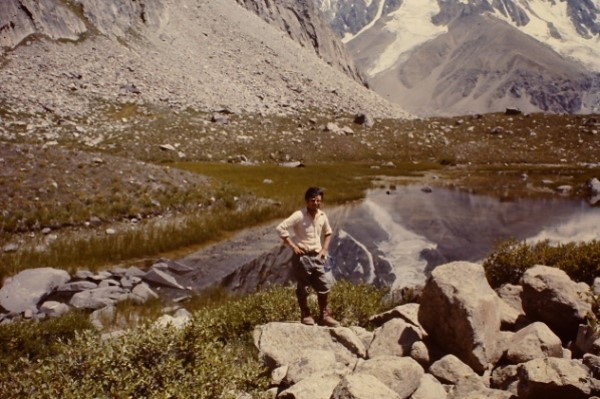Toilet training and the use of diapers are practices that are closely related to childhood development and the history and culture of humankind. They cannot be considered separate from child-raising and human development.
As for diapers and toilet training, the major topics have been whether to use cloth diapers or disposable diapers, who decides when the use of diapers should end, and the best time to start toilet training.
The first question about whether to choose cloth or disposable diapers made of paper is one that rarely comes up today, but in my early days as a pediatrician, it was a major issue that was debated in the mass media. Child-raising specialists split into factions and the issue turned into a great debate. In the heated argument, the cloth diaper faction claimed that disposable diapers would delay toilet training, waste resources, lead to environmental pollution, and mothers would no longer take a look to check their child's stools. The strongest objection was that wearing disposable diapers would delay toilet training because they were smooth and dry and did not feel uncomfortable even when wet. A subsequent survey found that disposable paper diapers are not a factor contributing to continued diaper-wearing and delayed toilet training, but at the time, this was an important topic of discussion.
When it comes to the decision to stop wearing diapers and start toilet training, who decides? Is the decision parent-centered or baby-centered? Does the mother take off the diaper or do the diapers come off when it is time? According to a prominent pediatrician, posing the question as a matter of deciding when to stop using diapers puts added pressure on the mother. This becomes a stressful question: When should I stop putting diapers on my child? For this reason, mothers were told that when the time came, the diapers would come off and this sort of expression became commonly used out of consideration for mothers. I do remember, however, objecting to this view because it does not reflect what really happens in toilet training and lacks correct information since in reality, parents are the ones who put diapers on the child and the child does not take them off freely. What expression do we use nowadays? When I searched Google, the phrases in Japanese "diapers come off (omutsu hazure)" and "(someone) removes the diapers (omutsu hazushi)" received practically the same number of hits, 59,000 for the former and 49,000 hits for the latter. My argument did not seem to be relevant or effective.
There is quite a bit of scientific research on the optimal time to stop wearing diapers and methods of removing diapers. It is not possible to go into detail here, but it is known that the start of toilet training is becoming later around the world, and when toilet training begins earlier, diaper removal takes place a bit earlier, but the toilet training period becomes longer. According to research by the American Academy of Pediatrics, rather than using the criteria of age in terms of years and months to decide the optimal period to begin toilet training, it is more sensible to decide according to the child's developmental stage.
In this way, diapers and toilet training are not only important matters in child raising, but also scientific topics that are related to child development. In this regard, the "mud diapers of Hunza," which is the title of this posting, was an experience that caused me to question and rethink such views.
As mentioned in my previous blog posting, I spent much of my youth in the mountains. Immediately after finishing my residency training at the age of 26, I accompanied a mountain climbing expedition from the Tokyo metropolitan government as their team doctor and climbed Batura Sar in Karakoram (altitude of 7800 meters) with them.
In Karakoram in the northern part of Pakistan where K2, the second highest mountain in the world is located, and in the Hunza region, a valley surrounded by tall mountains, people still follow a traditional lifestyle that has changed little over time.
My job was to watch over the mountaineers' health and serve as interpreter, and the government of Pakistan granted the permit to climb the mountain on the condition that I would provide medical help to local villagers if requested.
We flew in a small plane from Rawalpindi to Gilgit, the northernmost city that can be reached by plane. From there, we traveled one full day in a jeep over a road on a towering cliff to reach the small village that was the starting point of the climb. From there, we walked for five days along the valley to the base camp where over 100 mountaineers as well as porters were camped. Around this camp were more than 100 villagers who were waiting because they had heard that a "real" doctor would be in the area. Since it was impossible for me to examine 100 people, I had some of mountaineers serve as "eye doctors" and dispense medicine for the many patients who suffered from eye problems (mainly conjunctivitis). Likewise, others in our party were appointed "surgeons" and given the task of helping the many people with wounds and abrasions by applying an antiseptic and antibiotic ointment.
Communicating through an interpreter, I treated those villagers who had other ailments. There were some who only wanted to be seen by a real doctor. When I asked the reason, some answered, "I want you to use that thing (stethoscope) you are wearing around your neck on my chest." Others said they had leg problems and could not walk even though they had crossed a mountain range to come. It was a precious experience that I could never have had in Japan. There were also several infants with diarrhea and that is when I encountered the "muddy diapers."
When examining a case of diarrhea, it is necessary to look at the stool. An infant suffering from diarrhea was brought to me by the father. (The mother was not able to appear before a person of different religion.) When I removed the diaper cover made of goat skin and rags, the infant's lower body appeared to be covered with something that looked like black mud. It was a sight I will never forget. I stared with surprise, wondering if it was all feces, and looking closer, I saw that it was pitch-black mud that had absorbed the urine and feces. The Hunza region is very dry and the soil is also very dry and hot. The mud that was mixed with urine and feces was removed and the diaper was then filled with dry soil. Although in appearance, it looked dirty, it was not necessarily unclean, and because of the dry soil, the diaper had kept the infant's bottom dry, which worked to prevent diaper rash. It was an economical diaper.
I had only been thinking in terms of cloth diapers vs. disposable diapers, so this was quite a culture shock. At the same time, it was the valuable experience. I learned that what we think of as common sense in Japan is not necessarily understood the same way all over the world.

At Karakoram, Pakistan.



 Yoichi Sakakihara
Yoichi Sakakihara










